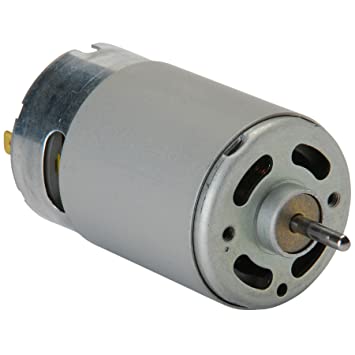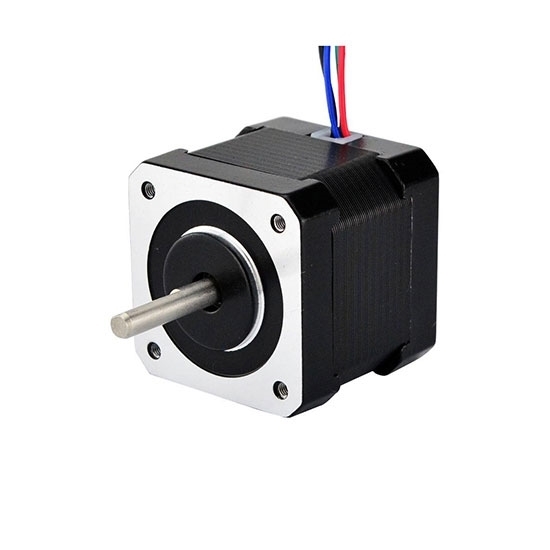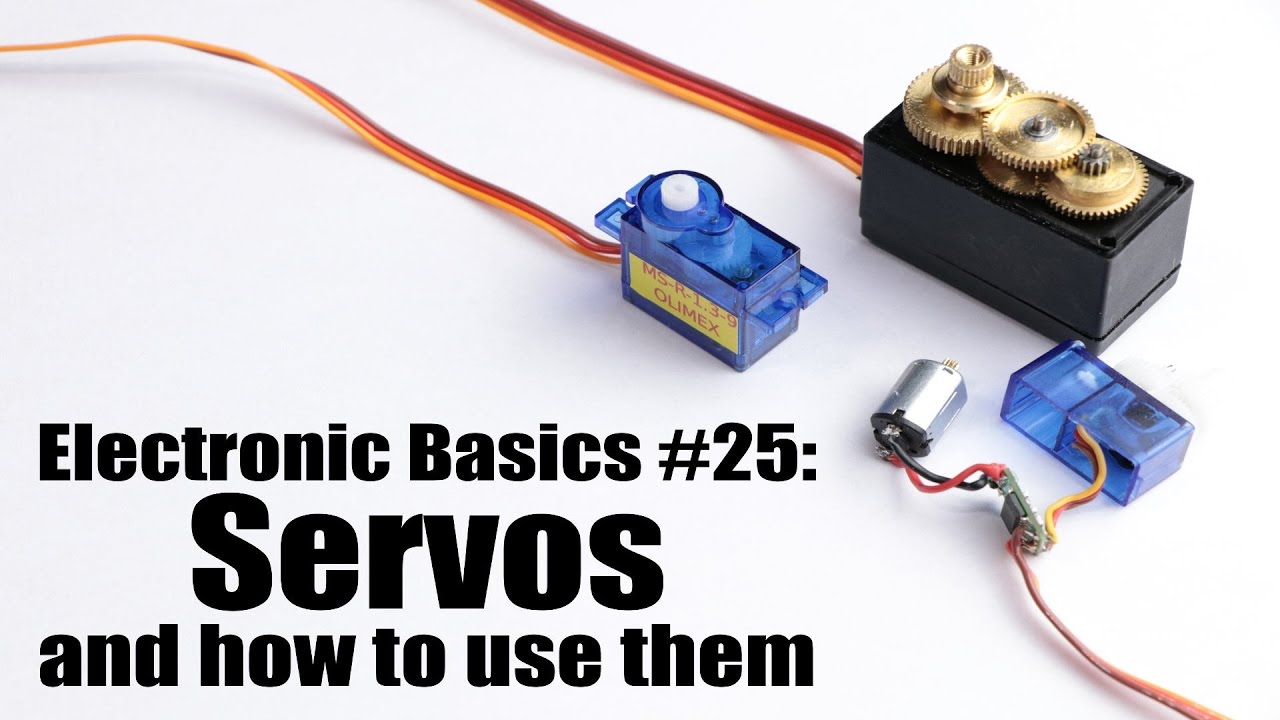Motor & Steering Gear

Motor
According to the type of working power supply, it can be divided into:
- 1). DC(Direct Current) motor
1.1). Brushless DC motor
- 1.2). Brushed DC motor
- 1.2.1). Permanent magnet DC motor
- 1.2.1.1). Rare Earth permanent magnet DC motor
- 1.2.1.2). DC Ferrite permanent magnet DC motor
- 1.2.1.3). Aluminium Nickel-cobalt permanent magnet DC motor
- 1.2.2). Electromagnetic DC motor
- 1.2.2.1). DC series motor
- 1.2.2.2). Shunt DC motor
- 1.2.2.3). Separately Excited DC motor
- 2). AC (Alternating Current) motor
- 2.1). Single-phase motor
- 2.2). Three-phase motor

According to the application, it can be divided into:
- Drive motor: Electric tools (including drilling, buffing, polishing, grooving, cutting, reaming and other tools) motor, household appliances(including washing machine, electric fan, refrigerator, air conditioner, tape recorder, video recorder, DCD, vacuum cleaner, camera, hair dryer, electric shaver, etc.) motor, and other general small mechanical equipment (including all kinds of small machine tools, small machinery, medical equipment, electronic instruments, etc.) motor
- Control motor:
- Stepping motor
- Servo motor
What is Servo Motor

Servo motor (servo motor) refers to the engine that controls the operation of mechanical components in the servo system, and is an auxiliary motor indirect transmission device. The servo motor can control the speed and position accuracy very accurately, and can convert the voltage signal into torque and speed to drive the control object. The rotor speed of the servo motor is controlled by the input signal and can respond quickly. In the automatic control system, it is used as an executive element, and has the characteristics of small electromechanical time constant and high linearity. It can convert the received electrical signal into the motor shaft. angular displacement or angular velocity output. It is divided into two categories: DC and AC servo motors. Its main feature is that when the signal voltage is zero, there is no rotation phenomenon, and the speed decreases uniformly with the increase of torque. Servo Motor refers to the engine that controls the operation of mechanical components in the servo system, it is a kind of indirect speed change device for auxiliary motor.
How Servo Motors Work
The servo system is an automatic control system that enables the output controlled quantities such as the position, orientation, and state of the object to follow any changes in the input target (or given value). The servo mainly relies on pulses for positioning. Basically, it can be understood in this way that when the servo motor receives one pulse, it will rotate the angle corresponding to one pulse, thereby realizing the displacement. Because the servo motor itself has the function of sending out pulses, so every time the servo motor Rotating an angle, a corresponding number of pulses will be sent out, which echoes the pulses received by the servo motor, or is called a closed loop. In this way, the system will know how many pulses are sent to the servo motor and how many pulses are received at the same time. , in this way, the rotation of the motor can be precisely controlled, so as to achieve precise positioning, which can reach 0.001mm. DC servo motors are divided into brushed and brushless motors. Brushed motors have low cost, simple structure, large starting torque, wide speed regulation range, easy control, and require maintenance, but maintenance is inconvenient (carbon brush replacement), generates electromagnetic interference, and has environmental requirements. Therefore, it can be used in general industrial and civil occasions that are sensitive to cost. The brushless motor is small in size, light in weight, large in output, fast in response, high in speed, small in inertia, smooth in rotation and stable in torque. The control is complex, and it is easy to realize intelligentization. Its electronic commutation mode is flexible, and it can be square wave commutation or sine wave commutation. The motor is maintenance-free, has high efficiency, low operating temperature, small electromagnetic radiation, long life, and can be used in various environments.
The AC servo motor is also a brushless motor, which is divided into synchronous and asynchronous motors. Synchronous motors are generally used in motion control. It has a large power range and can achieve great power. High inertia, low maximum rotational speed, and decreases rapidly as power increases. Therefore, it is suitable for applications that operate smoothly at low speeds.
The rotor inside the servo motor is a permanent magnet. The U/V/W three-phase electricity controlled by the driver forms an electromagnetic field. The rotor rotates under the action of this magnetic field. At the same time, the encoder that comes with the motor feeds back the signal to the driver, and the driver according to the feedback value Compared with the target value, the angle of rotation of the rotor is adjusted. The accuracy of the servo motor is determined by the accuracy (number of lines) of the encoder. The difference between AC servo motor and brushless DC servo motor in function: AC servo is better, because it is controlled by sine wave, and the torque ripple is small. DC servos are trapezoidal waves. But DC servos are simpler and cheaper. ![industrialservo]industrialservo.jpg
Comparison of characteristics of servo motors
DC brushless servo motor features small moment of inertia, low starting voltage and low no-load current; abandoning the contact commutation system, greatly increasing the motor speed, the maximum speed is up to 100 000rpm; the brushless servo motor does not need an encoder when performing servo control It can also realize the control of speed, position, torque, etc.; there is no brush wear, and in addition to high speed, it also has the characteristics of long life, low noise, and no electromagnetic interference. DC brush servo motor features
Small size, quick action, quick response, large overload capacity, wide speed regulation range
- Large torque at low speed, small fluctuation and stable operation
- Low noise, high efficiency
- The back-end encoder feedback (optional) constitutes the advantages of DC servo and so on
- Large transformer range and adjustable frequency
The advantages of servo motors over ordinary motors
- Accuracy: closed-loop control of position, speed and torque is realized; the problem of stepper motor out-of-step is overcome;
- Speed: good high-speed performance, generally rated speed can reach 2000 ~ 3000 rpm;
- Adaptability: strong anti-overload capability, able to withstand loads three times the rated torque, especially suitable for occasions with instantaneous load fluctuations and fast start requirements;
- Stable: The low-speed operation is stable, and the stepping operation phenomenon similar to the stepping motor will not occur during low-speed operation. Applicable to occasions with high-speed response requirements;
- Timeliness: The dynamic response time of motor acceleration and deceleration is short, generally within tens of milliseconds;
- Comfort: heat and noise are significantly reduced. To put it simply: the ordinary motor that is usually seen will rotate for a while due to its own inertia after the power is turned off, and then stop. The servo motor and the stepper motor are to stop when they say they stop, and they can go when they say they are going, and the response is extremely fast. But the stepper motor has out-of-step phenomenon.
Application Scenarios of Servo Motors
There are too many applications for servo motors. As long as there is a power source, and there is a requirement for accuracy, it may generally involve a servo motor. Such as machine tools, printing equipment, packaging equipment, textile equipment, laser processing equipment, robots, automated production lines and other equipment that require relatively high process accuracy, processing efficiency and work reliability.